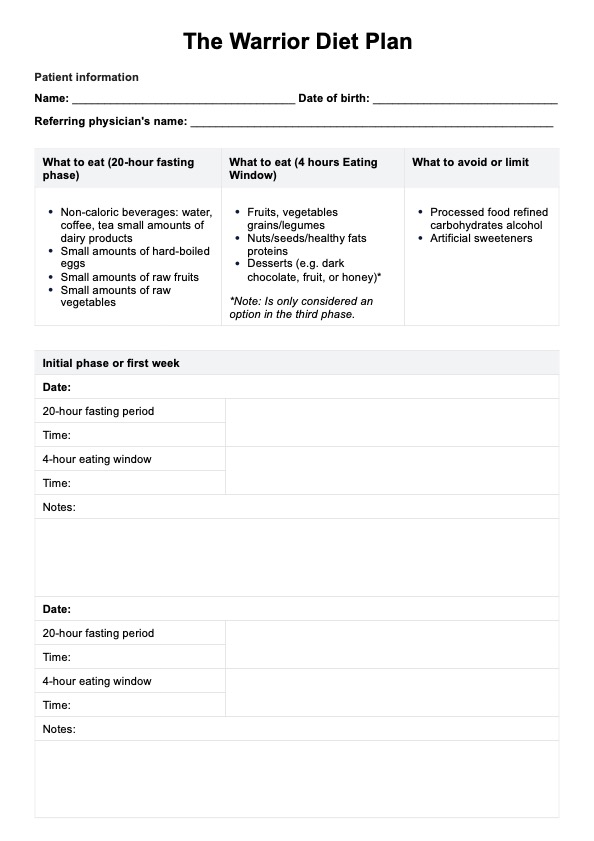The weight one can lose in a week on the warrior diet varies based on factors such as starting weight, food intake, and activity level. While a specific amount can't be guaranteed, a daily calorie deficit of 500 calories may generally result in losing about one pound of body fat per week, according to the Mayo Clinic.

The Warrior Diet: Results, Meal Plan, And Benefits To Lose Weight
Explore the Warrior Diet Plan, its health benefits, risks, and effectiveness in aiding weight loss and improving metabolic health for patients.
The Warrior Diet: Results, Meal Plan, And Benefits To Lose Weight Template
Commonly asked questions
You can eat meat on the warrior diet, but only starting the second week. In the first week, meat is excluded and allowed only during the four-hour eating window in the second and third weeks.
The duration of following the Warrior Diet Plan depends on individual goals, health conditions, and how the body responds. Considering your medical status, personal goals, and how you feel physically and mentally while following this intermittent fasting plan is essential. Regular monitoring is recommended to ensure it suits your overall well-being.
EHR and practice management software
Get started for free
*No credit card required
Free
$0/usd
Unlimited clients
Telehealth
1GB of storage
Client portal text
Automated billing and online payments











